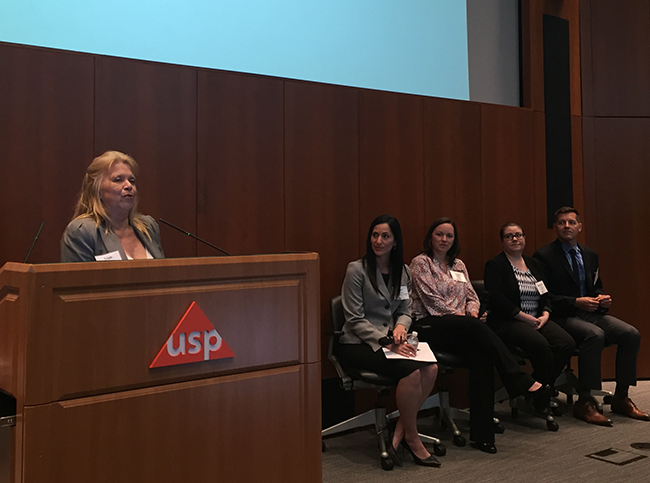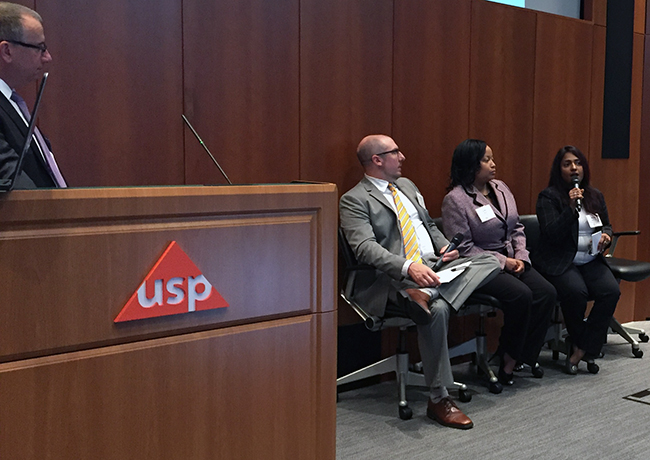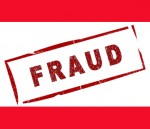The spring of 2019 saw record rain fall across North America, causing historic, severe flooding in the Great Plains, parts of the Midwest, and the Southern United States. That above-normal precipitation doesn’t look to be ending, either. The National Oceanic and Atmospheric Administration’s Climate Prediction Center predicts that wide swaths of the United States could face above normal precipitation for the remainder of 2019.
In addition to disrupting power to critical equipment and damaging property, when food businesses flood, food safety is put at risk. Flood waters can be contaminated with debris, sewage, chemicals, pests and more. In a restaurant or foodservice operation, any product, object or surface that flood waters touch becomes contaminated.
Pre-Flood Preparation
Having a documented flood emergency plan in place can give location staff a step-by-step course of action to follow in times of increased stress and panic. It can also help minimize losses for a business.
For national chains in particular, it can be harder to ensure that all locations have the resources and tools available in their area. Corporate operations can assist by identifying vendors and resources ahead of time.
- Designate roles and responsibilities. Having a clearly outlined plan with designated roles and responsibilities can prevent confusion and extra work during the crisis. Have an updated phone contact list of key contacts available for those with designated roles and responsibilities.
- Sandbags. Placing sandbags in front of doors or other openings may help limit flood damage.
- Vital records. Both paper and digital/electronic records can be at risk. Businesses using electronic records should ensure that files are automatically backed up regularly. Businesses using paper records should ensure that vital records are secured in such a way that they can be quickly removed to a safe place or elevated to prevent damage.
- Equipment. Flood waters can damage or destroy expensive equipment. Have a plan in place to remove equipment to a safe place.
- Food storage. If flood waters contact food supplies, many may need to be destroyed. Arranging for food storage in a secure place away from flood waters can help minimize losses. This may require refrigeration storage.
- Turn off electric and gas. Turning off natural gas lines can prevent devastating damage and contamination from occurring. Turning off and unplugging equipment that uses electricity can help protect the safety of rescue workers or staff returning for cleanup.
- Refrigeration. If it is not possible to remove food, be certain that all refrigerated units are equipped with accurate thermometers. If possible, monitor the temperature in the units during the disaster situation.
Post-Flood Recovery
Even with a rock-solid pre-storm plan in place, Mother Nature’s extreme weather events can wreak havoc on facilities. In the wake of a storm, sorting out what needs to be done to restore order to operations can be a hefty task.
Post-storm recovery can be an extensive task, especially if flooding is involved. It may require work of many staff members or outside vendors, such as remediation specialists. Safety should be absolutely paramount. No one should enter a space that has been flooded without confirmation that there are no electrical shock hazards, gas leaks or debris that could harm people. Structural damage that could lead to collapse or other injury is possible. Mold is also a risk following floods. All personnel involved in flood clean-up must wear personal protective equipment—eye protection, gloves, disposable aprons, rubber boots, and masks or respirators, etc.
The following guidelines can help prioritize steps to ensure food safety won’t be a factor holding back a location from re-opening.
- Safe water. Facilities cannot prepare food without a clean, potable water supply. If the water system was affected by flood or the local water supply was unsafe, the local health department should be involved in clearing re-opening.
- Disinfection of equipment. Any food equipment that was exposed to flood water or other non-potable water must be disinfected prior to use, including ice machines, which are often overlooked. Discard any ice already present in a machine. Thoroughly clean and sanitize the machine before turning it on. Once the machine is running again, discard the first two cycles of ice.
- Disinfection of surfaces. Any surface (countertops, walls, ceilings, floors, equipment surface, etc.) that was contacted by floodwaters must be disinfected before reopening.
- Use a commercial disinfectant with effectiveness against norovirus or make a chlorine bleach solution to disinfect affected areas.
- Use unscented bleach and wear gloves.
- Make fresh bleach solutions daily.
- Food contact surfaces that are disinfected must be rinsed with clean, potable water, and sanitized before use.
- Discard any mop heads or absorbent materials used to clean flooded areas.
- What to discard. Inevitably, there will be items that cannot be salvaged following a flood event. The following items should be discarded if they have come into contact with floodwater or non-potable water or were subjected to temperature abuse due to power outages. If there is any doubt, throw it out.
- Unpackaged food (examples: fruits, vegetables)
- Food in permeable packaging (examples: flour in bags, produce in cardboard boxes)
- Food packaging materials
- Refrigerated food in a refrigerated unit where the temperature rose above 41°F for more than four hours
- Any refrigerated product that was not temperature-controlled for more than four hours
- Frozen food product that has thawed to a temperature of above 41°F for more than four hours
- Canned items with damaged seams, swelling or dents
- Items with screw tops, twist-off caps, or other semi-permeable packaging
- Single service/use items
- Any linens that contacted floodwaters that cannot be laundered with bleach and dried in a mechanical dryer
- What can be safely kept. Not everything will need to be discarded.
- Canned foods free of dents or rust can be kept after labels are removed, they are disinfected, washed, rinsed in clean water, and sanitized; cans with any signs of bulging or leaking must be discarded; canned foods should be also be relabeled with the name of the food product, as well as the expiration date
- Linens that can be safely laundered with bleach and dried in a mechanical dryer
- Dishes, utensils, pots and pans, and other service items that are free of rust and can be disinfected, washed, and sanitized
As climate change continues to advance, the threat of extreme weather and flooding situations may soon be a reality for areas of the United States that have never experienced them before. In the Congress-mandated Fourth National Climate Assessment, compiled by the U.S. Global Change Research Program, the authors warn of the future of severe weather events.
“More frequent and intense extreme weather and climate-related events, as well as changes in average climate conditions, are expected to continue to damage infrastructure, ecosystems, and social systems that provide essential benefits to communities.” – Fourth National Climate Assessment
Even for businesses that have not had to consider flooding before, it may be time to sit down and develop a flooding and food safety plan of action. The time invested in training and educating staff members may help to protect investments and keep food safe in the event of flooding and weather emergencies.

























